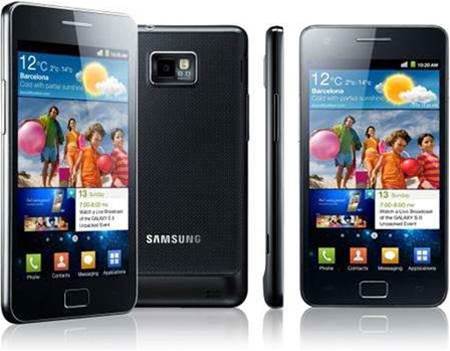We recently looked at Motorola’s Atrix smartphone and said that we were interested in seeing how the other soon-to-arrive dual-core offerings would stack up. Well we’ve now seen two of them and the results have been eye-opening.

The Samsung Galaxy S II is a genuinely remarkable smartphone, and it all starts with its most obvious asset: that huge 4.3-inch Super AMOLED Plus screen. It’s very bright and, as OLED has no pervasive backlight (each pixel has its own light source), contrast is nigh-on perfect.
Previous smartphone OLED panels have used what’s known as the PenTile grid, which gives you two green pixels for every blue and red pair and a rather grainy effect as a result.
The S II’s display arranges its red, green and blue subpixels in the traditional RGB grid, as they are in standard TFT displays, meaning that the traditional complaint that OLED screens are “grainier” than their TFT equivalents, doesn’t hold.
The only significant complaint we’d have is over the pixel count. It’s still “only” 480 x 800, which means small text on zoomed-out web pages is more difficult to make out than it is on the iPhone 4’s 3.5-inch 960 x 640 display.
Design

If the screen is impressive, the physical make-up of the Galaxy S II is almost as noteworthy. At its thinnest point we measured it at 8.7mm.
A bulge at the bottom and around the camera means it isn’t this slim along its entire length, but coupled with its light weight of 116g, the Galaxy S II is as pocket-friendly as any 4.3in-screened smartphone has any right to be.
Samsung has retained the single physical button below the screen as well as the all Gorilla Glass front. The latter is finished with an oleophobic coating and resists smudges from greasy digits remarkably well.
If we have one complaint, it’s the perception of quality on the build. The Galaxy S II’s textured rear panel is made of thin, flimsy plastic and the chassis, aside from the glass front, is plastic too.
Performance

That may soon be forgotten once you start using the S II, however. Under its shell, the new Galaxy sports a dual-core processor, based on the ARM Cortex A9 design.
Most dual-core smartphones and tablets are doing the same, but the difference with the S II is the speed is up from 1GHz to 1.2GHz.
In terms of benchmark tests, the S II blows the competition out of the water. It loaded the full ABC homepage in just over four seconds, completed the SunSpider test in 3.285 seconds.
Battery life

As ever, there’s a caveat, and that concerns battery life. In our standard tests over 24 hours the Galaxy S II chewed up around 60 percent of its capacity – still a fair whack behind the iPhone 4, despite having a bigger 1650mAh battery.
Camera and OS

Also notable is the huge improvement in the camera over its predecessor. It’s packed with features such as image stabilisation, blink detection, ISO adjustments, a macro mode and more. And it shoots at a decent resolution too: 8-megapixel stills and 1080p video at 30fps.
Software-wise, the Galaxy S II runs Android 2.3 (Gingerbread) with Samsung’s own UI tweaks, and there’s plenty to like, such as a persistent toolbar running along the bottom of the screen and switches for Wi-Fi, Bluetooth, GPS and Sound, plus a button for auto-rotate lock when you pull down on the notifications bar at the top.
Conclusion
It’s a little hard to discuss the Galaxy S II without sound like a kool-aid drinker, but the phone is nothing short of remarkable. Its power is unrivalled, its 4.3-inch is wonderfully bright and colourful, call quality is great and the camera is simply superb.
The only concern we have is over battery life, but even that remains solid compared to the others of its ilk, and the price is quite reasonable – $899 outright or $10 per month on a $45 plan from Vodafone (the phone isn’t carrier locked however).


.png&h=140&w=231&c=1&s=0)
_(5).jpg&h=140&w=231&c=1&s=0)






 Digital NSW 2025 Showcase
Digital NSW 2025 Showcase












_(1).jpg&h=140&w=231&c=1&s=0)



